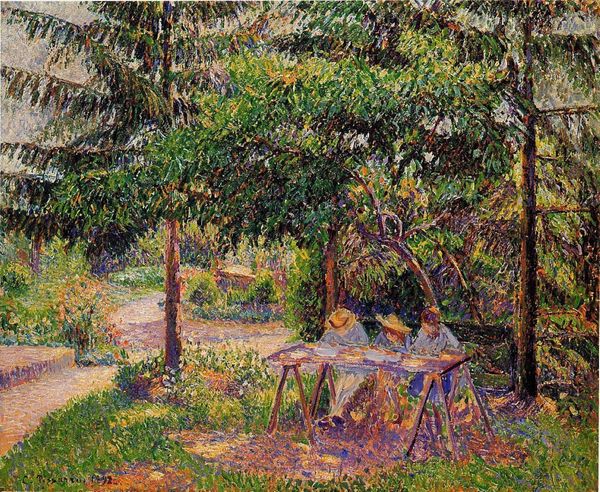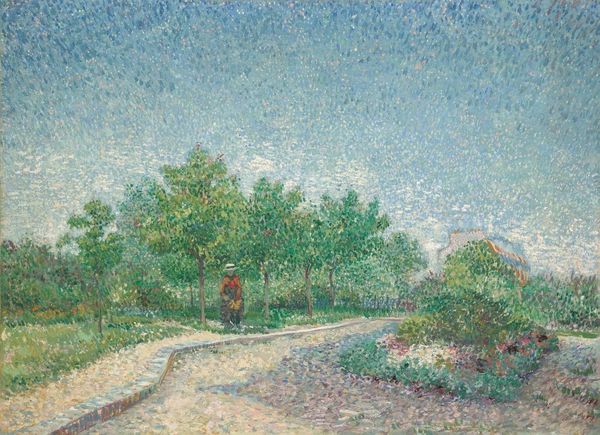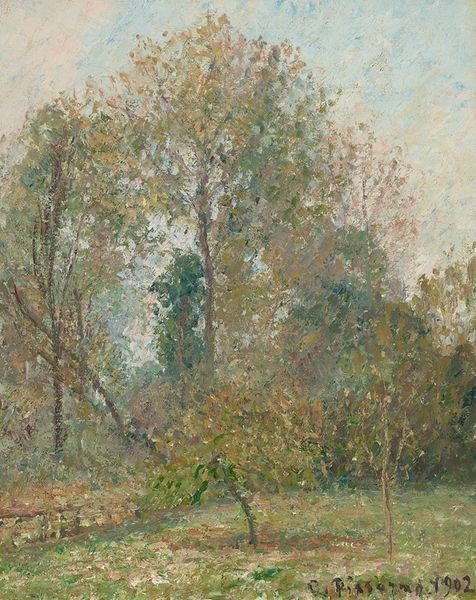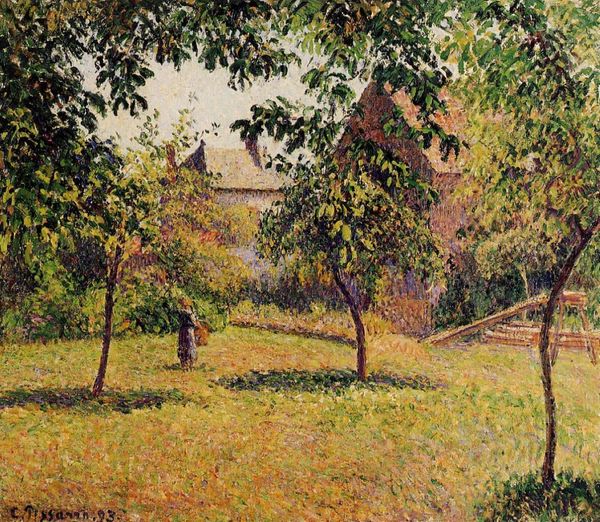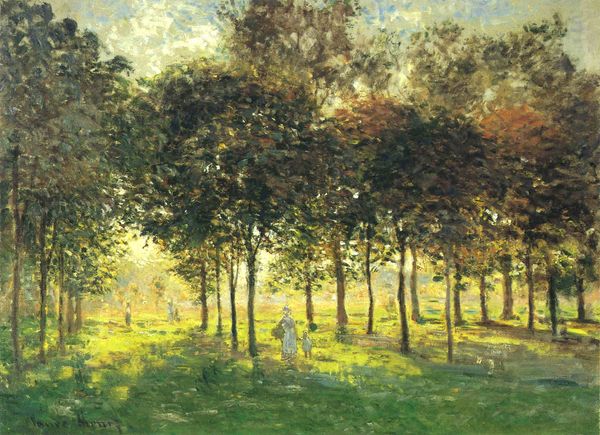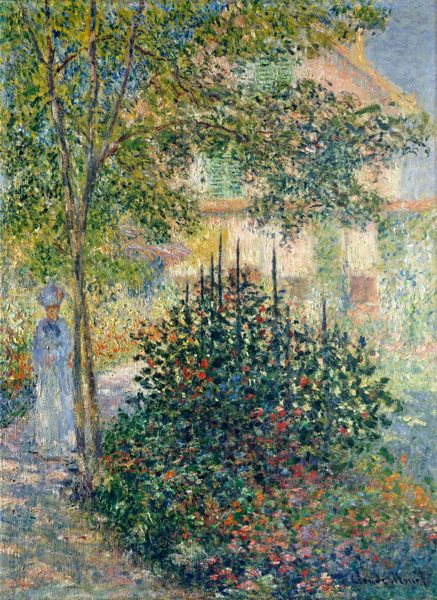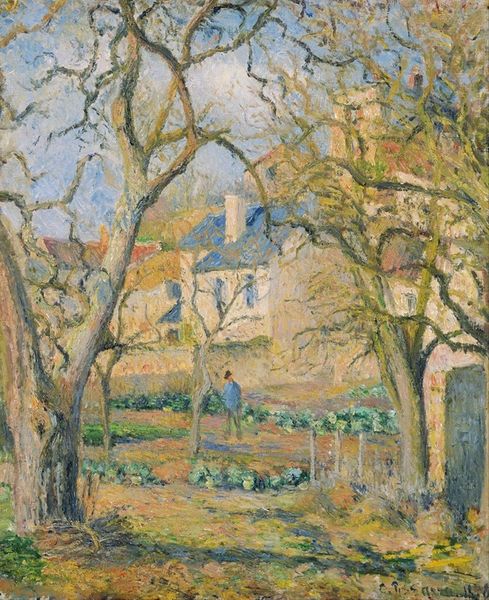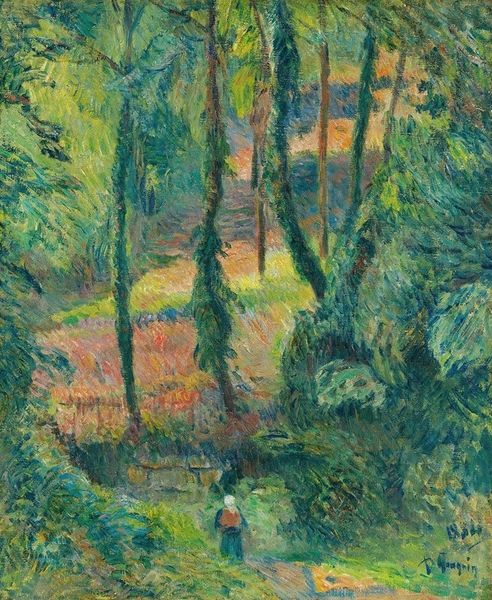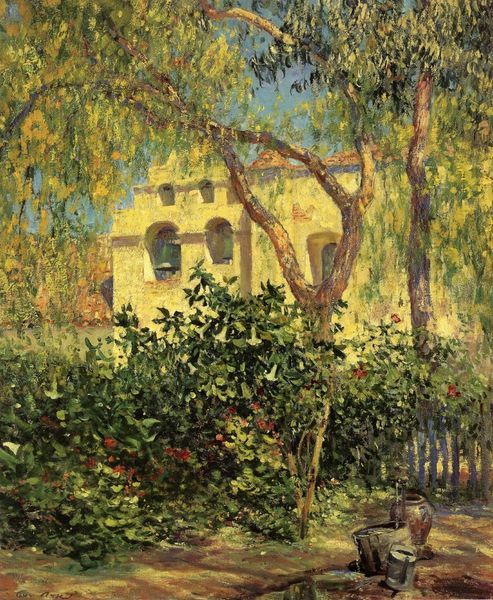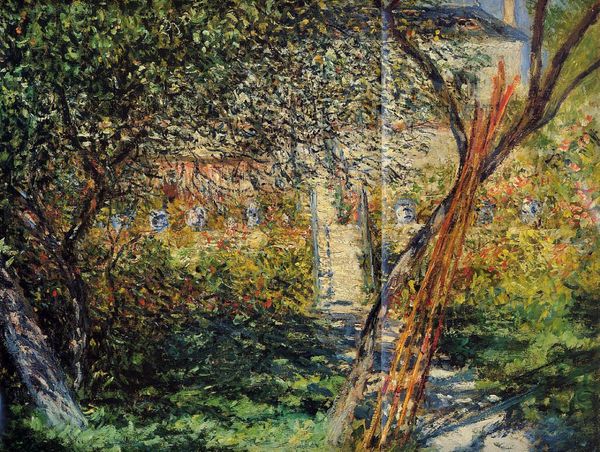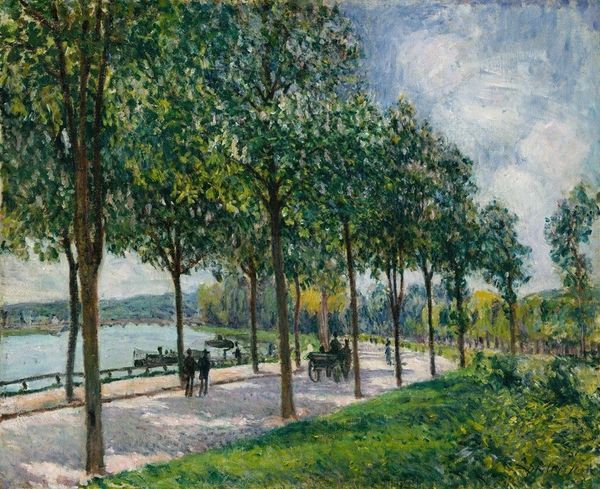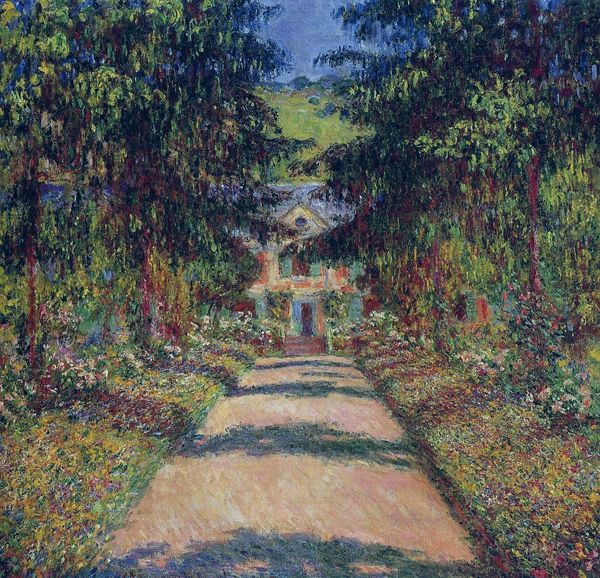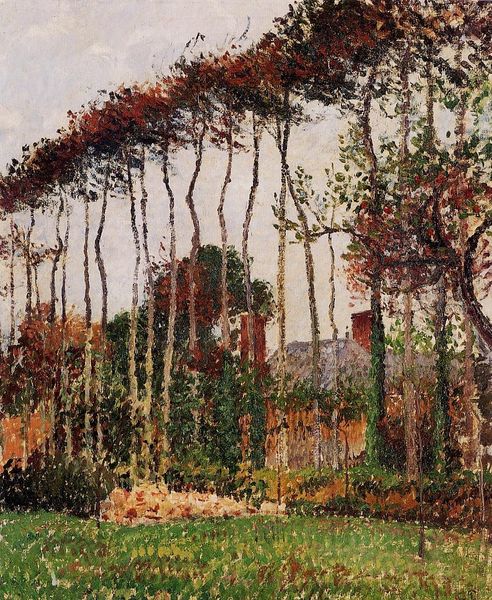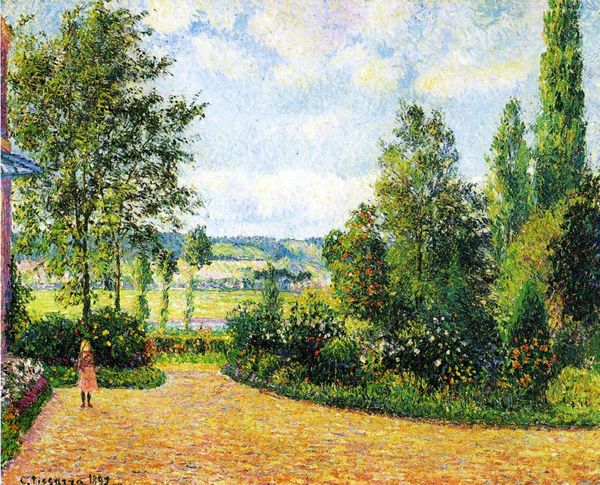
Copyright: Public domain
Editor: This is "The Turkeys, Or Esther in the Garden, Eragny," painted in 1893 by Lucien Pissarro. It’s an impressionistic landscape, depicting a woman in a garden, but what strikes me most is the name including both turkeys *and* Esther… I wonder, what do you see in this piece that connects those elements? Curator: It's fascinating how Pissarro intertwines the domestic, almost mundane scene of turkeys in a garden with the biblical reference to Esther. This poses a question: are we to read the scene as simply a representation of rural life, or is Pissarro inviting us to consider themes of power, resilience, and hidden influence, traditionally associated with the story of Esther? Editor: That's a very compelling reading! So you're suggesting that Esther, hidden within the "everyday," is a symbolic comment on women's roles, or their obscured power? Curator: Precisely. Considering the period, we might view the figure of Esther as a subversive symbol of female agency within a patriarchal society. The garden, often gendered female, becomes the space where this potential power resides. And the turkeys? They are not merely barnyard fowl. Consider their historical context – they symbolize abundance, yes, but also vulnerability. Could they represent a commentary on the precarity of women's roles, dependent on male protection but also valuable as a symbol of plenty? What do you make of the setting? Editor: It appears both wild and constructed… something about it seems…intentional? It feels less "nature" and more…carefully cultivated space. Curator: Precisely. The tension between the cultivated garden space and the seemingly 'natural' elements around it raises crucial questions. What's made vs. what's natural in this "woman's space"? How do constructed environments allow or curtail forms of expression, and can such boundaries allow room for symbolic, resilient agency, just as in the Esther story? Editor: This has completely transformed my perception. I went in seeing a pleasant pastoral scene, but I’m now viewing something with much more depth and potential for societal critique. Curator: Exactly. Art constantly evolves our understanding, urging us to think critically. By bringing a broader historical context into the picture, we begin to see these artworks as dynamic social and cultural narratives.
Comments
No comments
Be the first to comment and join the conversation on the ultimate creative platform.
